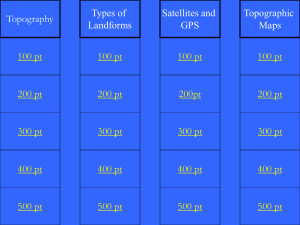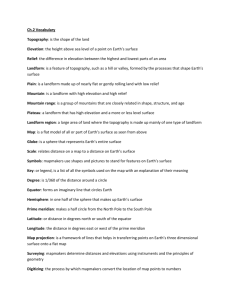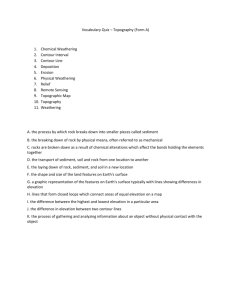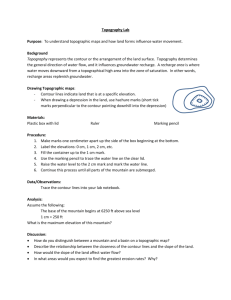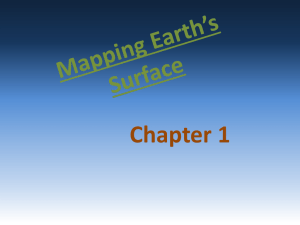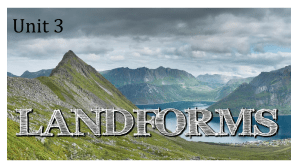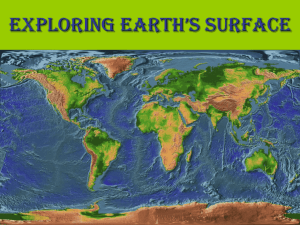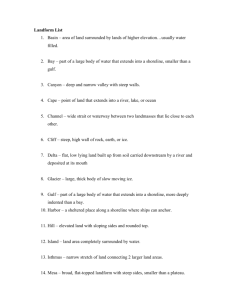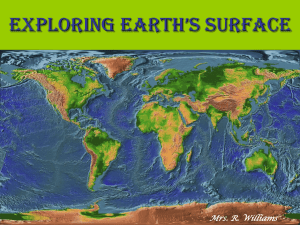Vocabulary on Topographic Maps
advertisement
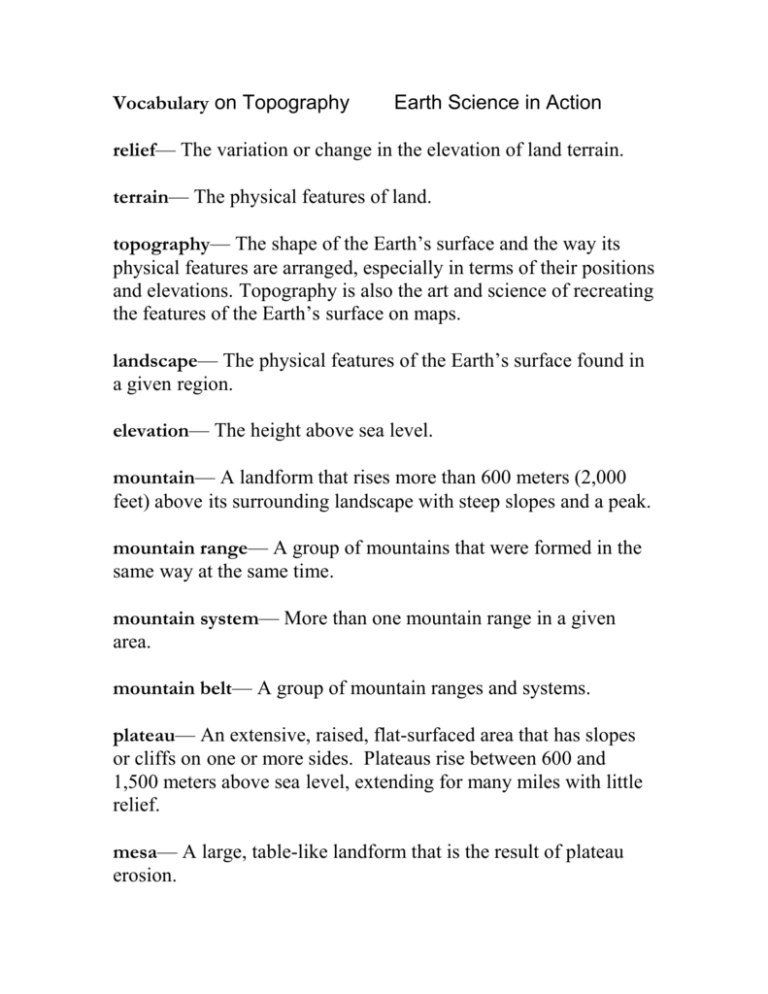
Vocabulary on Topography Earth Science in Action relief— The variation or change in the elevation of land terrain. terrain— The physical features of land. topography— The shape of the Earth’s surface and the way its physical features are arranged, especially in terms of their positions and elevations. Topography is also the art and science of recreating the features of the Earth’s surface on maps. landscape— The physical features of the Earth’s surface found in a given region. elevation— The height above sea level. mountain— A landform that rises more than 600 meters (2,000 feet) above its surrounding landscape with steep slopes and a peak. mountain range— A group of mountains that were formed in the same way at the same time. mountain system— More than one mountain range in a given area. mountain belt— A group of mountain ranges and systems. plateau— An extensive, raised, flat-surfaced area that has slopes or cliffs on one or more sides. Plateaus rise between 600 and 1,500 meters above sea level, extending for many miles with little relief. mesa— A large, table-like landform that is the result of plateau erosion. butte— A table-like landform like a mesa, but smaller in size. Buttes are also the result of plateau erosion. plains— Areas of extensive flat land that do not rise far above sea level. coastal plains— Areas of flat land along sea coasts that are low in elevation. interior plains— Areas of flat land that are found inland and are usually higher in elevation than coastal plains. cartographers — People who make maps. topographic maps — Also called topographical, relief or contour these maps show the topography of the land, using contour lines at regular elevation intervals. contour lines— Markings on a topographic map that indicate the elevation of the land being represented on the map. Contour lines that are drawn closer together indicate steep slopes on the land, and lines that are farther apart represent less steep topography.

